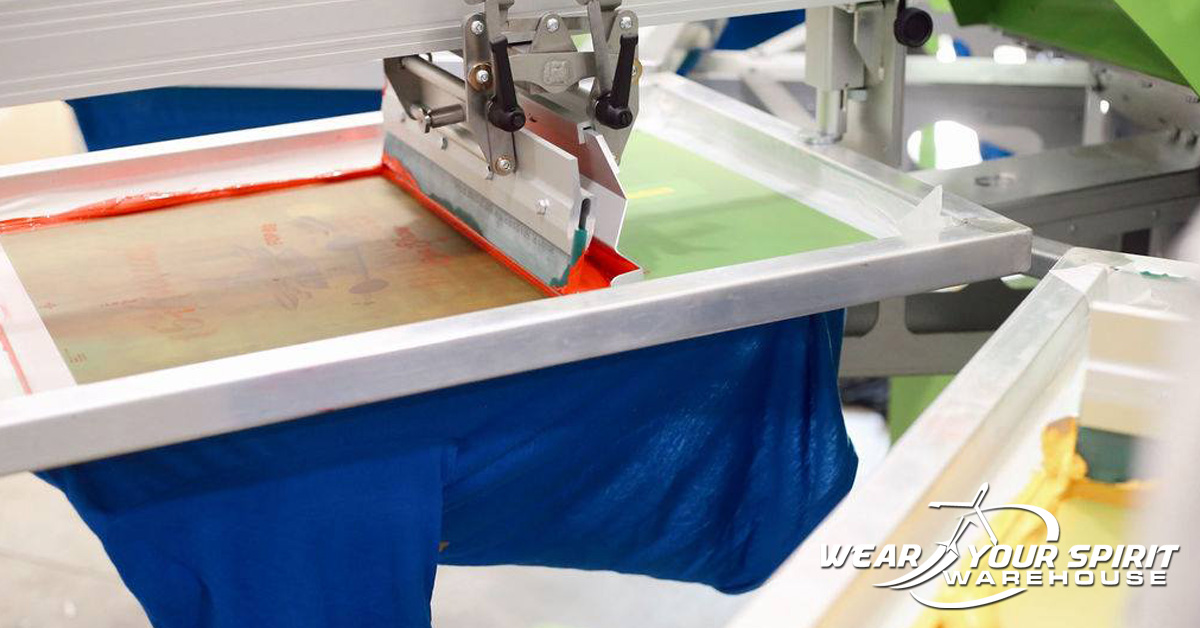 We offer two popular options to transfer your original design onto your selected items, screen printing, and sublimation. When you want to make a customized design for your apparel, mugs, or banners, we have everything you need and will guide you through the process.
We offer two popular options to transfer your original design onto your selected items, screen printing, and sublimation. When you want to make a customized design for your apparel, mugs, or banners, we have everything you need and will guide you through the process.
Screen printing and sublimation are two very different but popular methods for creating high-quality prints for your apparel needs. But, which is best for your project?
The most significant difference between screen printing and sublimation is how the image is applied and the type of ink used. Let us walk you through the differences and the pros and cons.
Screen Printing – What Is It?
Screen printing uses a stencil, heavy inks, and a heat source to create an image on your project. It is also known as silk screening, one of the oldest processes for printed art. The process creates a thick, raised design on your apparel. Screen printing is the more time-intensive option of these two.
Benefits of screen printing:
- Use it on almost any type of fabric/flat surface
- Produces a clear image without bleeding
- Great for large batches of apparel with the same design
- Especially great for cotton fabrics
- Creates a bold, tactile image in contrast to the fabric
- Use it with any color (image and material)
Disadvantages of screen printing:
- You can only apply one color at a time through the stenciled screen
- It only works on smooth or flat surfaces, so it doesn’t work well on mugs or baseball caps
- It can be a time-consuming process if there are multiple colors
- Will crack/peel after repeated washes
Sublimation – What Is It?
Sublimation uses chemical heat and pressure to bond the image with the fabric’s fibers. Sublimation is relatively quick and easy and works best with synthetic materials.
Benefits of sublimation:
- Durable and vivid designs
- You can use the full spectrum of the color scale, so great for photo imprints
- It doesn’t peel off or crack – it will last as long as the fabric/material
- Relatively fast and easy for small batches
- You can use it on multiple surfaces, including glass, vinyl, and fabrics
Disadvantages of sublimation:
- Use it on polyester or synthetic materials, not cotton
- Works best on white or light-colored fabrics
- Not cost-effective for large batches of items
- Consistent results, but it requires printing a new transfer sheet for each item
Screen printing is best for one or two bold color designs on contrasting fabric colors. Sublimation works best for detailed or multi-colored designs on white fabrics.
The cost-efficiency of each method boils down to the number of items you need. Sublimation will be more cost-efficient if you create custom-ordered t-shirts or sweatshirts. However, screen printing will be more cost-efficient if you make a large order of one design. We determine this by the processes involved with each method.
The number of colors in your design will also be an essential consideration. Sublimation is the way to go if you are printing a photo or multi-colored image. But screen printing will work great if your design only has one or two colors, as each color is applied separately. Another color consideration is that sublimation works best on white fabrics.
Another consideration is the fabric upon which you will print the image. The best material for sublimation projects is 100% polyester, while the best fabric for screen printing is 100% cotton. You can use blended fabrics for both methods, but this lowers the quality of the image, especially over time.
If you are looking for special effects such as glitter, 3D inks, or transparent inks, you will need to use screen printing as these don’t work well with sublimation techniques.
The average cost for either option depends mainly on the quantity ordered and any unique treatments. Frequently large screen printed orders are eligible for quantity discounts, but sublimation orders are rarely discounted even with quantities.
But, no matter whether you need just a few or hundreds of items, we can help. Give us a call today, and let us guide you to the right choice for your situation.
